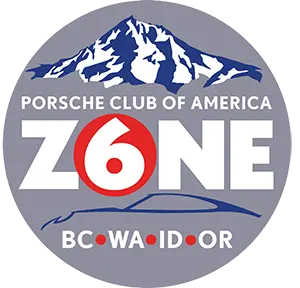
Shine On You Crazy Diamond
By Jeremy Williams, Technical Editor
“Remember when you were young, you shone like the sun
Shine on you crazy diamond…”
These Pink Floyd lyrics describe a new component technology that Porsche debuted in 2017, which we’re seeing become more and more prevalent on Porsche vehicles today. Referred to as PSCB, Porsche Surface Coated Brakes were released on the 2017 Cayenne Turbo’s as a standard feature.
The PSCB’s are many cuts above the standard Porsche gray-iron brakes in that they typically last about 30% longer than gray-iron, they hardly produce any brake dust, and they don’t rust like gray-iron. At the same time, while they’re ultimately not as race-worthy as PCCB’s (Porsche Ceramic Composite Brakes), they have performance properties similar to PCCB’s, and yet the PSCB’s cost about 1/3 that of PCCB’s. So, in many ways the PSCB’s are the best of both worlds.
The special brake rotors in the PSCB setup are the first to be developed for any vehicle. Their surface is incredibly shiny, akin to a mirror-like finish which doesn’t tarnish and is made of tungsten carbide which is almost as hard as a diamond. WIDIA is an acronym for wie Diamant (the German translation is “like diamond”) and is the trade name for an amazingly hard material which is mainly comprised of tungsten carbide. In close collaboration with Bosch/Buderus, what Porsche developed using this technology as a guide, is quite astonishing.
A brake rotor made 100% of tungsten carbide would cost about 3x that of PCCB’s (which are silly expensive already), so Porsche had to get very creative with the construction of the PSCB rotors; a process that took ages to develop. They start with a gray-iron rotor which is lasered to give structure, then an interlayer of nickel helps bind the gray-iron and tungsten carbide, where the tungsten carbide particles are flame-sprayed onto the rotor at supersonic speeds. This results in a tungsten carbide coating which is about 100 micrometers thick. However, once the rotors were finally created, Porsche wasn’t done. Very special brake pads were also needed to complete the PSCB setup.
Since the brake rotor surface is so smooth, the brake pad compound needed to be engineered with very hard microscopic particles that would anchor in to the also-very hard tungsten carbide rotor coating. One would expect that such a unique brake pad would still produce considerable brake dust as it digs and bites into the brake rotor, however PSCB pads create an astonishing 90% less brake dust than gray-iron pads do. As well, the mirror-like rotor surface which has no grainy structure like a grey-iron rotor, actually allows for complete pad-rotor contact, which means the entire surface area of the rotor can be used for fully optimal braking performance. When the PSCB components get hot from repeated braking exercises, they don’t show signs of brake fade like standard gray-iron components. This places the performance output of PSCB’s close to that of PCCB’s, but remember that the PSCB’s are about 1/3 the price of PCCB’s.
Due to the gigantic reduction in brake dust from the PSCB technology, Porsche cleverly decided to market PSCB applications via a unique color for the 10-piston front calipers and 4-piston rear calipers. While “Big Red” brake calipers have previously signified Porsche’s best brakes, along came yellow calipers to signify the race-worthy PCCB’s. Now, white calipers signify PSCB’s. White brake calipers you ask?! Yes, what better way to communicate that the PSCB’s produce such little brake dust and therefore the calipers stay super clean!
So with PCCB-like performance for significantly less money, and major improvements over standard gray-iron brakes, what are the downsides to PSCB’s? The only one I’ve been able to come up with is regarding those who want to participate in more off-pavement driving with their Cayenne, yet keep in mind that this sticking point isn’t specific to only PSCB’s. As vehicles continue to grow in both size and performance output, larger and larger brake components are needed to help quickly slow these vehicles down. I’m all for the highest margin of safety and performance, so bigger brakes vs smaller brakes are definitely an attribute. However, in order to clear these huge brakes, a large wheel is needed (21″-22″ diameter wheels are the norm now), which means the profile/aspect ratio of the tire is thinner. What does this mean if you’re wanting to take your strong, durable, and more than capable Cayenne off-pavement for everything from reaching a favorite hiking trailhead to more serious overlanding? Thinner profile tires mean more possibility for wheel damage and tire punctures, a rougher ride, and less grip on uneven terrain. And since the brakes are so massive in diameter, you cannot easily reduce wheel diameter in order to inversely increase the tire’s sidewall height, you’re pretty much stuck with more fragile tires for off-pavement adventures. A possible solution? Hop in an older ’05-16 955/957/early958-generation Cayenne with its 18″ or 19″ wheels and taller tires, as this will also help you appreciate the numerous refinements of your ’17-18 late958-generation or ’19+ 9Y0/9Y3-generation Cayenne that much more!
Jeremy Williams is the Oregon PCA Technical Editor. He co-owns Matrix Integrated (Matrix Integrated Inc.) with his brother Justin. Jeremy can be reached at [email protected]
*Special thanks to SSF for much of the PSCB information.







